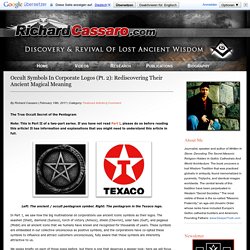

Fractales y arquitectura: instrucciones para su uso. Con este post me despido del blog y dejo aquí una guía que, a modo de índice, facilite la navegación del mismo.

Curso “Morfología fractal” Se trata de manejar 3 principios básicos: autosemejanza, iteración y retroalimentación que están explicados en mi libro en el capítulo 2 (El nuevo orden: los fractales). El micro de experimentación 1 trabaja estos principios desde las dos dimensiones. El micro de experimentación 2 incorpora la tercera dimensión y el micro de experimentación 3 genera un territorio fractal del cual emergen edificios integrando ambos a través de la geometría fractal. Advances in Architectural Geometry. Arquitectura y geometría: perspectivas de la morfología fractal. Por Alberto Cordiviola y Ticiana Lamego+ “Una araña ejecuta operaciones que recuerdan las del tejedor, y una abeja avergonzaría, por la construcción de las celdas de su colmena a más de un arquitecto.

Pero lo que distingue, con ventaja, al peor de los arquitectos de la mejor de las abejas es que él modela su estructura en la imaginación antes que construirla en la realidad. (…) no solamente efectúa un cambio en la forma de lo natural, en lo natural, al mismo tiempo, efectúa su propio objetivo, objetivo que él sabe que determina, como una ley, el modo y manera de su actuar al que tiene que subordinar su voluntad.” 1 La cita de Marx recuerda el proceso por el cual nosotros, arquitectos, realizamos nuestra tarea.
Modelar la estructura en nuestra imaginación antes de construirla en la realidad, implicará llevar anteriormente, esta realidad dentro del mundo mental en que modelamos la nueva estructura. Richard Cassaro » 2011 » February. The True Occult Secret of the Pentagram Note: This is Part II of a two-part series.

If you have not read Part I, please do so before reading this article! It has information and explanations that you might need to understand this article in full. Left: The ancient / occult pentagram symbol. Right: The pentagram in the Texaco logo. In Part 1, we saw how the big multinational oil corporations use ancient iconic symbols as their logos. We spoke briefly on each of those logos before, but there is one that deserves a deeper look: here we will focus on the Texaco logo, which is yet another corporate oil company logo that is patterned after an ancient emblem, the pentagram or pentacle. The pentagram appears in many corporate logos. A great many people in the world hold the mistaken belief that the Pentagram is an “evil” symbol, representative of the Judeo-Christian “Devil” or “Satan.” The Pentagram instead symbolizes the makeup of man: his inner spiritual side and his outer physical side. space.
Engineering in Global Perspective. Self Similarity ~ Fractals, Fractals Everywhere… In this essay I propose nothing more than an idea for nature’s own design… And, by doing so, perhaps one may also find a suggestion for mankind’s ultimate drive within this design.

While I’m not saying that there is an absolute answer to “Life, The Universe and Everything,” I am offering up an obvious pattern that seems to recur with common-place regularity throughout every “Universal” system that I have ever studied and/or viewed so far… It is a pattern that nature has followed for eons already; whether through the natural laws of physics, via the designs of evolution, or in the memories we all use each day to build our world around us and develop the meanings that we place on it… This idea can even be found at the heart of all poetry, exuding beauty, simplicity and finesse simply by adding metaphorical adage to the rough-hewn strata of every day activities.
So… Firstly, let’s look at the definition of “self-similarity.” Next… Let’s look at the definition of an attractor. Ishmael vs. African Fractals. Ron Eglash. Ron Eglash and Julian BleeckerScience as Culture, pages 353-374, Volume 10, Issue 3, 2001 The Race for Cyberspace: Information Technology in the Black Diaspora Barbara Christian's seminal essay, "The race for theory," analyzed the ways in which the academic competition to create a theory of black women's writing had overshadowed the potent theoretical content of the writing itself.

Similarly, this essay examines how the hype over application of new information technologies to racialized social problems has overshadowed the potent technological content of the communities themselves. 1) Cyberspace as Savior In the early 1990s the internet was flooded with various versions of the "cyberspace manifesto," most of which contained something like this passage from John Perry Barlow: Ours is a world that is both everywhere and nowhere, but it is not where bodies live. One can take solace in the possibility that the worlds technoscience makes are not the only possible ones.